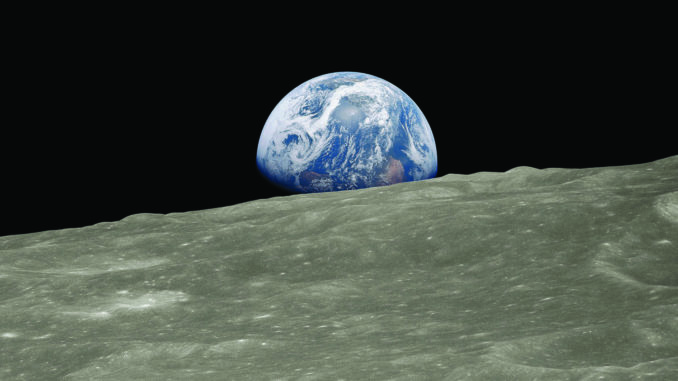
Bio Bites
By R. Gary Raham
In 2016, E.O. Wilson, an entomologist/conservationist awarded for both his science (U.S. National Medal of Science and many more) and his writing (Pulitzer Prize in 1979), wrote a book entitled Half Earth. The subtitle was “Our planet’s fight for life.” The book proposed that humans could keep our planet alive and functioning properly if we restricted ourselves to using just half the Earth’s resources. It seems like a modest proposal until we look at the impact that 7.7 billion large primates can have. For example, approximately 38% of the planet’s ice-free land is now devoted to agriculture—to the production of food for our single species, Homo sapiens.
The general concept of Wilson’s plan is that we should plan for and conserve large stretches of N-S trending landscapes that will allow living things to migrate as climate changes alter the optimal living conditions for the various other species on which we depend. M. C. Davis, a multimillionaire from Florida, has been working with Wilson to begin the process of acquiring properties that would serve as such corridors.
The impact (I) of humans on our planet can be defined by three factors: Population (P), Affluence (A)—how well we live, and Technology (T)—the clever techniques and devices we invent using natural resources. We end up with an equation (Sorry, mathephobes.) I = P x A x T. Our collective impact has been so high over the past 10,000 years—since the invention of agriculture and a settled lifestyle—that scientists proposed we should name this period the Anthropocene or “The Age of Man.”
When we become extinct (as inevitable as death and taxes) our collective traces in the geological sediments will consist of:
- ) A skewed pollen count dominated by our food crops of corn, wheat, rice, and soy.
- ) Severe depletion of non-human species (evidence of a mass extinction comparable to the one which ended the Age of Dinosaurs)
- ) Spike in carbon dioxide levels, ocean acidity, and toxic compounds in marine sediments
- ) Evidence of ice-free poles for the first time in 20 million years, along with an associated geographical shift in the pollen record as plant ranges shift.
As a biologist, I appreciate Wilson’s comment that “History makes no sense without prehistory, and prehistory makes no sense without biology.” We too often forget that we are not the masters of the world, but only its consciousness. We are clever apes, after all, that have so far found ways to support our extravagances. “If we save the living world,” Wilson says, “we automatically save the physical world, because in order to achieve the first we must also achieve the second.”
Although Wilson is a rationalist, he admits to a certain amount of blind faith. “Earth,” he believes, “by the twenty-second century, can be turned, if we so wish, into a permanent paradise for human beings, or at least the strong beginnings of one.” The tools we will need are an ethic of treating each other with simple decency (the Golden Rule), the unrelenting application of reason (the scientific demand for testable proof), and an acceptance of what we truly are: an intelligent, socially adept fragment of an old and continuously evolving biosphere.
Maybe a half of Earth will be enough.
Support Northern Colorado Journalism
Show your support for North Forty News by helping us produce more content. It's a kind and simple gesture that will help us continue to bring more content to you.
BONUS - Donors get a link in their receipt to sign up for our once-per-week instant text messaging alert. Get your e-copy of North Forty News the moment it is released!
Click to Donate
